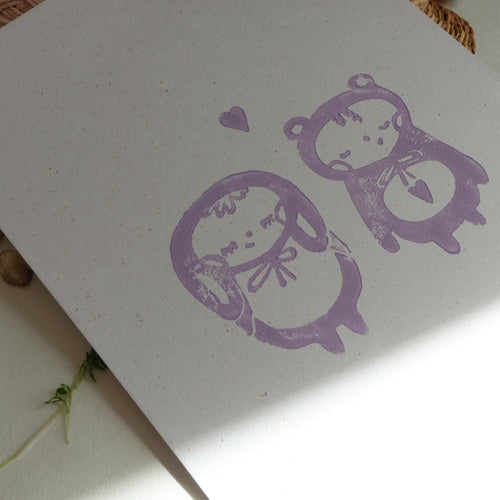Kawaii art, often recognized for its endearing and cheerful qualities, is more than just an artistic style—it’s a cultural phenomenon. Rooted in Japanese culture, the word “kawaii” (可愛い) translates to "cute" or "adorable." This art style emphasizes softness, innocence, and playfulness, making it universally appealing to people of all ages.
Defining Kawaii Art
Kawaii art is characterized by its childlike simplicity and an emphasis on cuteness. From rounded shapes to vibrant pastel colors, every element in kawaii art is designed to evoke feelings of joy and warmth. It’s not just limited to traditional mediums like drawings or paintings but extends to fashion, design, and even technology.
Key Characteristics of Kawaii Art:
Simplified Designs: Minimal details, rounded shapes, and exaggerated features like large eyes and small noses.
Bright and Pastel Colors: Soft pinks, baby blues, and light yellows dominate the palette.
Whimsical Themes: Common motifs include animals, food with faces, and everyday objects turned into adorable characters.
Playful Expressions: Smiling faces, blushing cheeks, and expressive eyes are staples of the kawaii aesthetic.
Origins of Kawaii Art
The roots of kawaii art can be traced back to Japan in the 1970s. It gained popularity through magazines, stationery, and pop culture icons like Hello Kitty as part of Sanrio, which debuted in 1974. The movement was initially a youth-driven rebellion against rigid societal norms, emphasizing individuality and creativity. Over the decades, kawaii art has grown from a subculture to a mainstream cultural force.
Applications of Kawaii Art
Stationery and Merchandise
From stickers and notebooks to keychains and plush toys, kawaii art is a staple in the world of stationery and collectibles. Characters like Rilakkuma, Gudetama, and Pusheen have become iconic worldwide.
Digital Media and Gaming
Mobile games, apps, and websites often incorporate kawaii elements to make user interfaces more engaging. Popular examples include games like Animal Crossing and apps featuring kawaii-themed stickers and emojis.
Fashion and Accessories
The kawaii aesthetic has a significant influence on Japanese street fashion, particularly styles like Lolita and Decora. Accessories like kawaii bags, jewelry, and clothing are popular across the globe.
Food Art
Kawaii culture has extended to the culinary world, with bento boxes and desserts designed to look like adorable characters or animals.
Why Is Kawaii Art So Popular?
Kawaii art appeals to the universal human desire for joy and simplicity. Its playful and non-threatening nature provides an escape from the complexities of everyday life. Additionally, kawaii art’s versatility makes it accessible—whether through a simple sticker or an elaborate mural, it’s easy to enjoy and share.
Learning Kawaii Art
If you’re inspired to create your own kawaii art, here are some tips to get started:
Start Simple: Focus on basic shapes and designs.
Use Pastel Colors: Soft and cheerful colors are key to the kawaii aesthetic.
Add Personality: Give your characters expressive faces and playful accessories.
Practice Consistency: Keep your lines clean and your designs minimalistic.
For tutorials, check out platforms like Pinterest and YouTube, where you’ll find step-by-step guides on creating kawaii art.
Kawaii art is a celebration of cuteness and creativity, transcending cultural and linguistic boundaries. Whether you’re an artist, a fan, or simply curious, exploring the world of kawaii art can bring a dose of happiness and inspiration to your life. Ready to dive in? Start by experimenting with simple designs and watch as your creations bring smiles to those around you!

